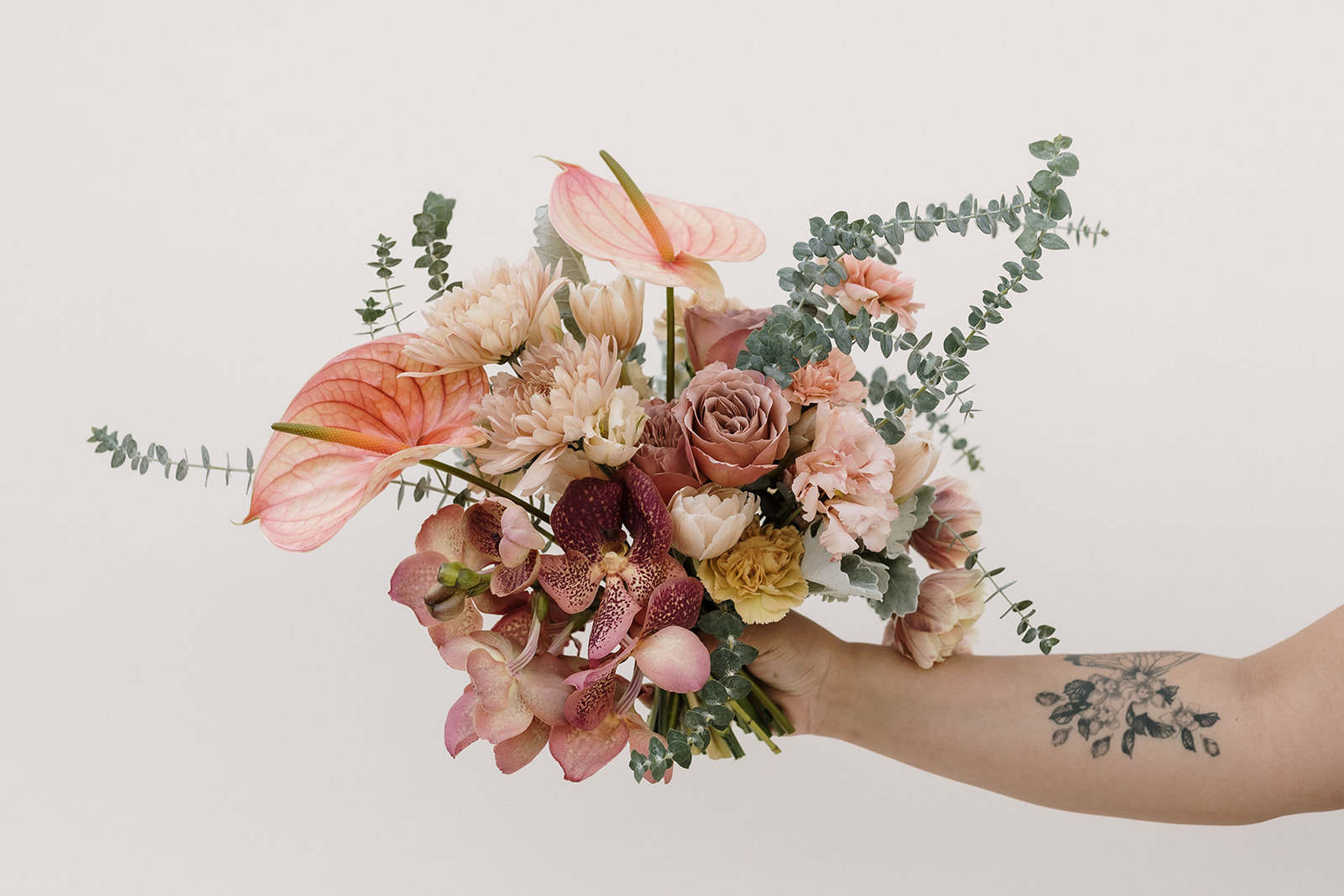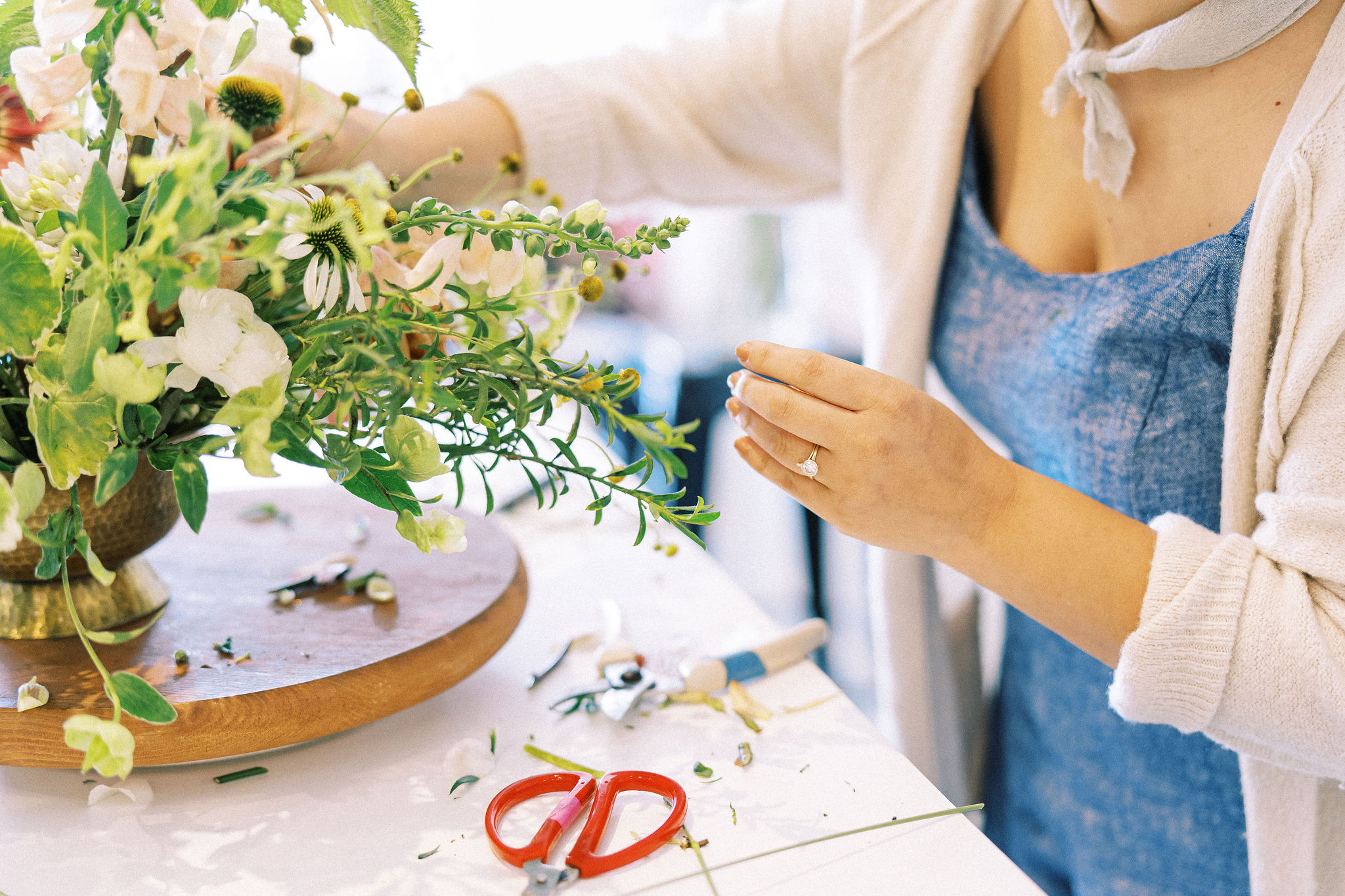In The Details: Adding Texture & Dimension With Seasonal Flowers
Texture is an element of design defined as the visual and tactile experience of an object, the intersection of how an object looks and feels. Think of texture descriptors such as waxy, spiky, ridged, silky, velvety, rough, smooth, coarse, and so on.
All flowers have texture, whether they are smooth, like an anthurium, plump like an orchid petal, or full of ruffles, “hairs,” or seeds like coxcomb, grasses, and echinacea pods.
Texture can even be conveyed or exaggerated without a strict physical feeling. Bicolor, striated, or striped flowers and foliages have a perceived texture, like the tropical leaf shown below. Though smooth, the foliage looks ribbed adding depth, dimension and contrast to the designs.
Fall is known for its variety of texture. As blooms burst into seeds and pods, vines, berries and flowers dapple with new antique color, and leaves crinkle and curl as they dry, we experience a visual buffet.
Grasses are a personal favorite and work beautifully to add a gathered and natural aesthetic. They are a perfect transition in late summer to Fall designs. A few types I love working are millet seteria, sea oats and broom corn. Marigolds, dahlias, sunflowers, chrysanthemums, and zinnias are flowering textural icons. Other fan-favorites include amaranthus, echinacea pods, coxcomb, plume celosia, hydrangea, kale, bittersweet, and classic Fall staples like pumpkins and gourds.
Textural details contribute heavily to visual interest in designs. Combining different textures can draw lines and soften transitions. Texture is also a great way to highlight a focal moment or create contrast. By using contrasting textures, you can create dynamic, attractive designs that allow blooms to pop. See, for instance, the, ruffled tinted peach kale contrasting the fluffy grasses and papery fern creating dynamism in a monochromatic palette.
Texture is also a critical element of “loose and airy” garden style design. Grasses, foliage, sprays, and laterals create the sense of “air” because there are moments of space between each leaf, bloom, and blade.
Privet berry, heuchera bloom, quickfire hydrangea, Ninebark foliage, baptisia foliage, celosia, and Queen Anne’s lace contrast the layered clusters in the interior of the bouquet, creating a collar of airy-ness.
Texture is also a beautiful and cost effective way to add body and fullness to a design. The design below skips any prominent mass bloom to create fullness and rather focuses on a range of late summer textures like grasses, fillers and foliages. The arrangement feels full and engaging because of the commingling textures. These textures also highlight the comparatively smooth petals of the echinacea, allowing them to pop and create a larger presence, albeit just having a few stems.
PRO TIP: When using late summer, early fall textures, consider removing or “pruning” off excess foliage so textures become a more prominent part of the design. As seen in the above arrangement, I removed all the foliage from any branch that had berries, like the pokeweed and privet, so those textures became more pronounced and highlighted in the design.
As the season transitions into fall, some materials become more fragile so it is a great time of year to source from local growers. By sourcing local materials, you may find a greater range and less impact on your stems due to skipping the shipping. If you do need to utilize shipped stems, consider hardier perennials and grasses as they typically travel well! Another great resource for unique dried material is @velvetcuration, she curates beautiful and interesting textures all year around!
By leveraging the textural quality of your blooms, you can create beautiful, dimensional designs that captivate. Whether it’s the rough, dried foliage of fall or the soft, airy feel of summer grasses, texture makes a stunning impact on your work.
Want to learn more about the Principles & Elements of design? Check out my Bouquet Bootcamp®️ online course!
Previous Post:
Next Post:
I think you'll also love reading...







